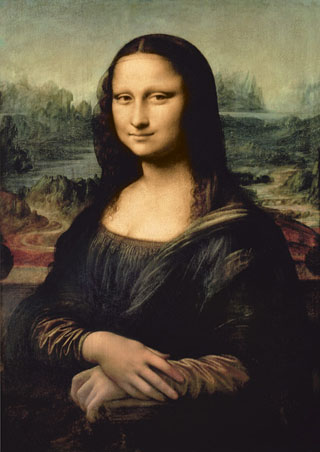To mark National Smile Week, today’s choice of picture is Leonardo da Vinci’s portrait of a smiling woman: the Mona Lisa or La Gioconde, as it is known in France. The painting’s French title is often mistakenly thought to allude to the sitter’s jocose aspect but in fact it simply refers to her name. She was, in real life, Mrs del Giocondo. As Leonardo’s first biographer, Giorgio Vasari, explained, the painter “undertook to execute, for Francesco del Giocondo, the portrait of Monna [sic] Lisa, his wife…”
Vasari clearly thought a lot of this painting, which he described in considerable detail in his life of Leonardo. He admired it above all for its lifelike quality, admittedly a cliché of Renaissance art criticism (as well as the origin of the modern idea that the measure of a good portrait is that the eyes follow you around the room) but on this occasion more than justified. Vasari also explained the sitter’s famously amused expression. Leonardo hired singers and jesters “who might make her remain merry, in order to take away that melancholy which painters are often wont to give to the portraits that they paint.”
Through the centuries, the young lady whom Vasari called “Monna Lisa” has had more than her fair share of admirers. No other woman in history could claim to have shared a bathroom with Francis I (her first owner, who is said to have hung her in the Appartement des Bains in his palace at Fontainebleau) as well as a bedroom with Napoleon (who appropriated her for his private quarters on seizing power). Jules Michelet, the nineteenth-century historian, found himself almost overwhelmed by her siren-like charms. “The painting attracts me, calls me, invades me, absorbs me,” he wrote; “I go to it in spite of myself, as the...


